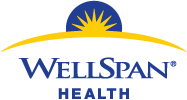Have you made any changes in your life to reduce risks? Share your thoughts with us in a comment below.
8 tips for cancer prevention

78,000 people in Pennsylvania are diagnosed with cancer each year. There are so many people getting cancer, one has to wonder, “Do I have any control if I get cancer or not?”
- 20% of Pennsylvanians still smoke and 3% use smokeless tobacco
- PA is the only state that doesn’t tax smokeless tobacco
- 36% of Pennsylvanians are overweight and 28% are overweight (Body Mass Index over 30)
The PA Department of Health shares in this video thatthere are many cancer risks that wecancontrol. What are they?
Take a look:
Did you know that 40% of cancer is preventable?
That’s what doctors say. These eight steps can cut your risk of cancer plus keep a lot of other nasty health problems at bay.
Let’s start with the biggest change you can make to dramatically cut your risk of cancer:
1. QUIT SMOKING
Kick the habit, for yourself and those around you. Doctors say tobacco causes at least 30% of all cancer deaths in the United States.

Tobacco causes at least 30% of all cancer deaths in the U.S.
Cigarettes are the leading cause of the following types of cancer:
- Acute myelogenous leukemia (AML)
- Bladder cancer
- Cervical cancer
- Esophageal cancer
- Kidney cancer
- Lung cancer
- Oral cavity cancer
- Pancreatic cancer
- Stomach cancer
If you never smoke or quit smoking, you’ll lower the risk of getting cancer and dying from cancer. Yes, quitting is hard. Keep trying.
You can do it. Quitterinyou.org
2. MAINTAIN A HEALTHY WEIGHT
You may reduce your risk of:
- Postmenopausal breast cancer
- Colorectal cancer
- Endometrial cancer
- Esophageal cancer
- Kidney cancer
- Pancreatic cancer
The American Cancer Society lists more benefits of keeping a healthy weight and suggests some healthy foods to eat. They’ll also help you calculate your body mass index. Then click Lose It! to track and reach your weight-loss goals.
3. CHOOSE HEALTHY FOODS
Even if you don’t need to lose weight, pay attention to what you eat.

The National Cancer Institute estimates that if all Americans adopted a low-fat, high-fiber diet there would be:
- 50% fewer cases of colon and rectal cancer
- 25% less breast cancer
- 15% less cancer of the prostate, uterine lining and gallbladder
So what does a healthy diet look like?
More:
- Plants: Five or more servings of vegetables and fruits each day
- Colors: More colors = more nutrients= lower risk of cancer
- Whole grains
Less:
- Refined or processed grains
- Processed meats and red meats
- Quantity: Look at the label to see the actual serving size.
Take a look at the New American Plate and see how many calories you need each day.
4. LIMIT ALCOHOL
Men : 2 drink limit per day
Women: 1 drink per day
The American Cancer Society warns that even within those suggested limits, alcohol might elevate the risk for:
- Oral cancer
- Esophageal cancer
- Breast cancer
- Colorectal cancer
- Liver cancer
5. GET ACTIVE!
Get moving for 30 minutes a day, 5 days a week. Little things add up… like taking the stairs, walking the dog or gardening.

Studies show a strong link between physical activity and a lower risk of
- colorectal cancer
- postmenopausal breast cancer
- endometrial cancer
And ongoing research could find more benefits. Use this fitness chart (.pdf) to track your progress. And check out these fitness tools.
6. GET IMMUNIZED
Certain virus can cause cancer. Immunization is available for:
Hepatitis B. Hepatitis B can increase the risk of developing liver cancer. The hepatitis B vaccine is routinely given to infants. It’s also recommended for certain high-risk adults — such as adults who are sexually active but not in a mutually monogamous relationship, men who have sex with men, and health care or public safety workers who might be exposed to infected blood or body fluids.
Human papillomavirus (HPV). HPV can cause cervical cancer and some head and neck cancers. The HPV vaccine is available to both men and women from adolescence to age .
7. GET SCREENED
Be proactive about your health- know family history, get screenings, and be aware of changes in your body.

Colonoscopies and Pap Smears can actually prevent colon or cervical cancers, by catching pre-cancerous lesions before they turn cancerous. Skin lesions can also be caught in the pre-cancerous phase.
Prostate and Breast cancer screenings can catch cancers in their very early stages, when they’re often easier to treat with more successful outcomes.
Sign up for a Screening reminders.
8. BE SUN SMART
Skin cancer is the most common cancer of all, and melanoma can be deadly.
- Don’t skimp on the sunscreen, at least 15 SPF
- Avoid midday sun
- Stay in the shade
- Wear hats, long sleeves and long pants
- Avoid tanning beds and sunlamps
Learn more about cancer prevention at Facing Cancer Together, a witf community education initiative.



